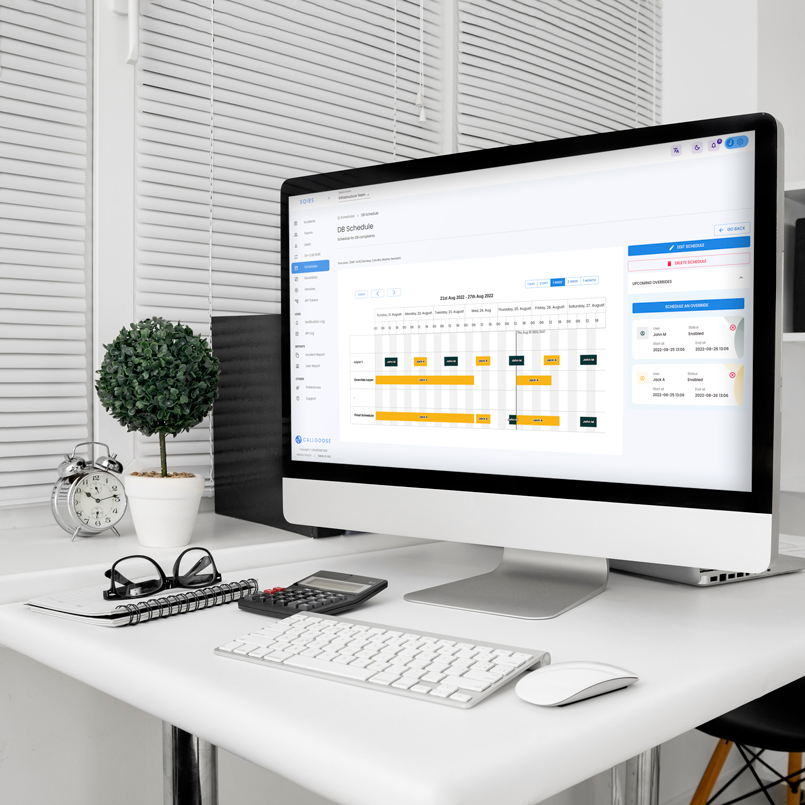Getting Started
Special
SINGLE SIGN-ON
Teams
Users
Escalation Policies
Service
Incident
Request
On-Call Shift
Schedules
Schedule Override
Logs
API
Webhook
Apps Integration
Reports
Preference
Profile
Automation
Self-Service Portal
FAQ
Kubernetes Profile
Creating a Profile Using Profile Type: Kubernetes
Overview
This document provides step-by-step instructions for creating and configuring a profile using the Kubernetes profile type in Callgoose SQIBS automation platform. Kubernetes profiles allow users to configure reusable Kubernetes settings or parameters for automation workflows. Below are the steps and details for creating a Kubernetes profile.
Steps to Add a Kubernetes Profile
- Navigate to Add Profile
- Callgoose SQIBS Automation SaaS Platform Profile
- Access the automation section in the Callgoose SQIBS automation platform.
- Go to Automation, and you can see Profiles.
- Click on Profiles and then click on Add Profile to create a new profile.
- Callgoose SQIBS Runner Internal Profile
- Access the automation section in the Callgoose SQIBS automation platform.
- Go to Automation, and you can see Profiles.
- Select the specific Runner and click on Show Internal Profiles
- Select Profile type and Click on the Add button
- Select Profile Type
- Choose Kubernetes as the profile type from the list of available options.
- Fill in the Details
- Name*:
- Provide a descriptive name for the profile.
- Example: Cluster Configuration Profile.
- Description*:
- Add a detailed description of the profile.
- Example: This profile includes Kubernetes configurations for cluster management.
- Kubernetes Version:
- Select the required Kubernetes version.
- Example: 1.30.1.
- Git or Callgoose?*
Specify where the Action files are located.
- Git: The files are stored within the Git repository. You'll need to provide the necessary credentials to access it. Go here to view more details about how to configure Git.
- Callgoose Platform: The files will be stored on the Callgoose Platform.
If you choose Git, then set up git properly and use valid Git Entry File.
- Kubernetes Configuration File*:
- Upload the configuration file required for Kubernetes operations.
- Example: config file.
- Kubernetes Command To Run*:
- This is shown only if it is an Internal Profile.
- Enter the command to run the environment.
- Example: kubernetes
- Save the Profile
- Click on Save to finalize the creation of the profile.
- Upload Multiple Files (Optional)
- If you have multiple files to upload:
- First, create the profile.
- Then, open that profile.
- Click on Show Details.
- Click on Edit, and you will be able to see the Other Files option.
- Upload additional related files as required by your Kubernetes setup.
Additional Notes
- Fields marked with an asterisk (*) are mandatory.
- Use descriptive names and descriptions to make it easier for team members to understand the purpose of the profile.
- Ensure the uploaded configuration files are correct and tested locally to avoid runtime errors.
- Kubernetes profiles are reusable and can be referenced in various automation workflows.
Example Configuration
Name: Cluster Configuration Profile
Description: This profile includes Kubernetes configurations for cluster management.
Kubernetes Version: 1.30.1
Git or Callgoose?: Callgoose Platform
Kubernetes Configuration File: Upload a file named config.
Conclusion
By following these steps, you can effectively create a Kubernetes profile in Callgoose SQIBS automation platform. Kubernetes profiles enhance the reusability of configurations and simplify the management of automation workflows involving Kubernetes.

